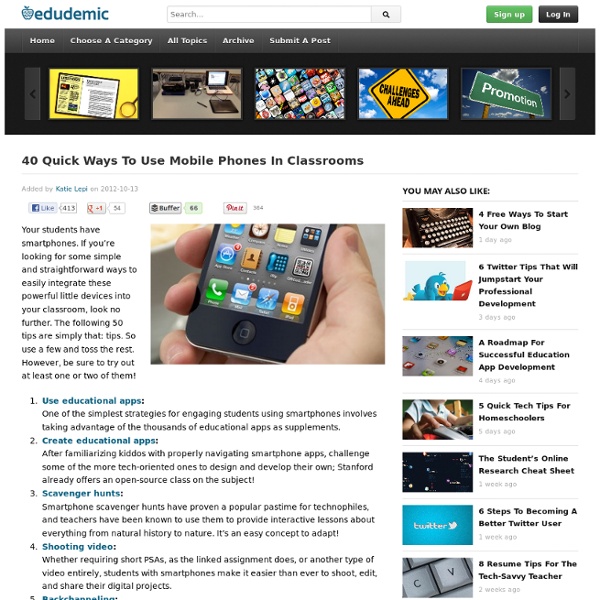



The Ultimate Guide To Infographics What Are Infographics? I found many definitions of what Infographics are as well as explanations of how they are useful in a variety of settings. Here are a couple of the definitions I liked followed by their sources: Information graphics or infographics are graphic visual representations of information, data or knowledge. And finally, my favorite, an Infographic that explains what is an Infographic: by Hot Butter Studio. These three examples do a nice job of defining what infographics are, but what is the value of an infographic in education? The Value of Visualization from Column Five on Vimeo . The Science Behind Infographics Now that we have a basic understanding of what infographics are, This refers to the part of the video where the narrator asks the viewer to count the number of 7s in the number set. Smiciklas also notes that “Robert Lane and Dr. Infographics and Education They allow students to comprehend, interpret, and analyze complex information in a quick and clear manner.
Quale scuola, quale docente nell'era digitale - 2012 «Si è svolto il giorno 29 settembre 2012 a Roma un Convegno internazionale organizzato dalla FIDAE (federazione istituti di attività educative) per valutare un progetto europeo, dal titolo “Information and communications technologies to support new ways of lifelong learning”, al quale hanno partecipato insegnanti delle scuole aderenti alla FIDAE stessa provenienti da tutta Italia e rappresentanti anche di scuole inglesi e francesi che hanno partecipato al progetto. La relazione introduttiva del Prof. Macrì, che noi pubblichiamo oggi, non si è però limitata all’argomento specifico del Convegno ma ha voluto spaziare su temi generali e di indirizzo, abbozzando elementi di una nuova cultura e pratica del sistema istruzione. Mi piace richiamare l’attenzione del lettore sul dato di convergenza della relazione del prof. Le tecnologie dell'informazione e comunicazione (TIC) stanno trasformando tutti gli aspetti della nostra vita e della nostra civiltà (Z.
100 Ways To Use iPads In Your Classroom 10 Ways To Become A Better Online Learner 7.61K Views 0 Likes There are some quick and easy ways to become a better online learner. How This School District Turned its Students' Love of Mobile into Better Learning, Test Scores Teenagers. They may forget your request to mow the lawn, fill up the gas and clean their rooms, but they'll never fail to bring their smartphone or tablet when they go out of the house. Indeed, teens would be the dream demographic for an organizational Bring Your Own Device policy - they use them constantly, they could train your IT staff on the latest devices, etc. - apart from the inconvenient fact that you don't really need an iPhone to man the french fry station at Jack in the Box. But schools, that's a whole different ball of wax. "People were already trying to hide what they were doing on their smartphone because it was illegal by the school rules. But I'm jumping ahead of myself. Giving 12-year-olds their own smartphones to use during class would seem to be a recipe for disaster. It may seem like a crude tactic, ala "These are NOT the Droids you're looking for," but it was just as effective as a Jedi Mind Trick. Credit: Shutterstock.com Digital Divide?
My 10 Favorite Educational Mind Maps 7 Online Quiz Tools Perfect For Classrooms 19.93K Views 0 Likes Whether you want to have students turn in homework via an online form or simply take a quiz or test, online quiz tools are critical to having a connected classroom. Eduteca L’accesso all’Eduteca è riservata ai soli associati, abbiamo reso pubblico solo una piccolissima parte del repertorio dei siti catalogati Ad oggi sono stati classificati 3460 siti suddivisi in 246 categorie. Il Centro Studi Impara Digitale raccoglie, classifica, organizza e valida materiale didattico già disponibile in rete per renderlo agilmente fruibile a insegnanti e studenti. A questo fine si avvale della collaborazione e delle competenze di Wikimedia, associazione leader mondiale nella diffusione della conoscenza libera. Internet è un contenitore straordinariamente ricco di risorse educative digitali, create da università e scuole o per iniziativa di singoli insegnanti. Si tratta spesso di risorse isolate, non molto note e difficilmente raggiungibili. La navigazione all’interno dell’eduteca è possibile tramite il motore di ricerca o usando gli indici di navigazione.
appetijt 10 Curricula-Spanning, Learning-Boosting, Creativity-Inspiring, Must-Have Apps : The Moss-Free Stone April 27, 2012 by Randy Rodgers · No Comments · Bookmarking, collaboration, creativity, Digital Storytelling, Educational technology, images/video, iPad/iPod, mobile computing, podcasting, Teaching and Learning Because there are just not enough app lists, I decided I needed to throw in one more. There are tons of lists that tout subject-specific apps for students at all levels. Catch Notes (FREE) – Fantastic tool for taking and organizing (via tags) text, audio, or visual notes, independently or collaboratively. That’s my list. Tags: apps·authoring·collaboration·creativity·iPad·iPhone·iPod Touch·learning·study skills·teaching·technology·writing
50 Free Android Apps Being Used In Education Right Now Added by Katie Lepi on 2012-10-10 I’ll admit it. I’m a fan of Apple products. But that doesn’t mean I don’t yearn for some of the fabulous features on Android phones too. Until the day when Apple and Google merge (ha!) Edudemic doesn’t cover Android as much as it deserves so this useful list should be a helpful start. I’ve searched around for each of these apps and found interesting stories on how most are being used in classrooms and education right now. Toddlers Kids Numbers and Math Lite : Educational game maker Intellijoy offers this free game to effectively teach preschoolers numbers, addition, subtraction, and more without sensory overload. Elementary and Middle School Brain Café – GeoQuiz : With a beautiful interface and strong database of questions, GeoQuiz is a great program for testing young learners’ knowledge of global geography. High school and College Class Help and Study Aids Andie Graph : Want to save $90? Educational Organizations Comments are closed.